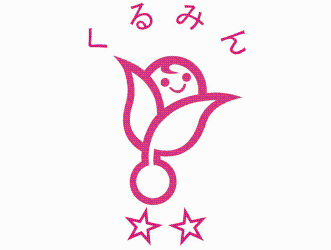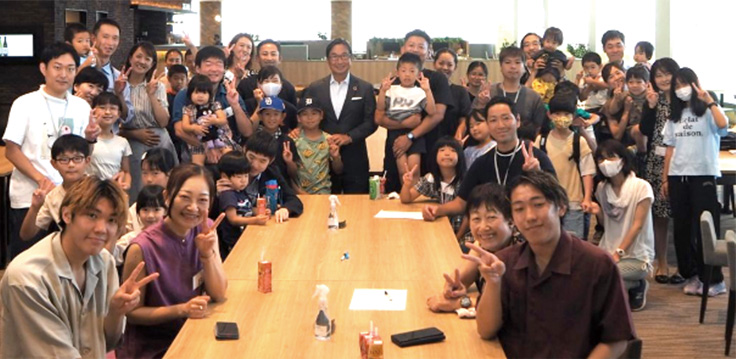System to support the success of diverse employees
Basic approach
Based on our DE&I policy, Idemitsu Kosan has established various systems to create an environment where diverse human resources can work comfortably. We design and operate a system based on the opinions of those involved through employee surveys and other means, so that employees can maintain a long-term employment balance by promoting a work-life balance between work, childcare, and nursing care.
In particular, we have positioned work-life balance support and the development of the next generation as one of our key measures to promote DE&I, and are expanding our systems in line with life events. We believe that fostering a workplace culture where employees who are balancing work and family (childcare/nursing care) can work comfortably and find it rewarding will lead to the creation of an environment where all employees can demonstrate their abilities to the fullest. We are developing various initiatives. We have also established a system in which employees who require hospital treatment or treatment due to injury or illness can continue to work actively.
Strategy
General business owner action plan based on the Next Generation Development Support Measures Promotion Act

We analyzed our company's issues, considered specific measures, and formulated an action plan to support the success of our employees who aim to balance work and family. Additionally, in 2012 and 2015, we were certified by the Ministry of Health, Labor and Welfare as a childcare support company, and received the next-generation certification mark "Kurumin"*.
*Kurumin: A certification mark from the Ministry of Health, Labor and Welfare that can be obtained by companies that actively work to support the development of the next generation. Based on the Act on Advancement of Measures to Support the Development of the Next Generation, businesses can receive certification by formulating a general business owner action plan and meeting certain standards.
| Planning period |
|
|---|---|
| Goals, details of initiatives, and timing of implementation |
<Initiatives to achieve goals> Initiative 1: Continuing to improve understanding in the workplace and disseminate the system (from April 2023) ・Information dissemination on internal portal site ・Updated guidebook to support balancing childcare and work Initiative 2: Promoting the elimination of gender gaps in childcare and housework (from April 2023) ・Trial of recommended childcare leave (2) Developing diverse working conditions that contribute to reviewing work styles <Initiatives to achieve goals> Initiative 1: Setting target value for annual paid acquisition rate (from April 2023) Initiative 2: Promote taking annual paid leave (from April 2023) ・Establishment of paid leave incentive days and dissemination of information ・Visualization of paid leave usage rate ・Thorough work management Initiative 3: Fostering workplace understanding and culture regarding health (from April 2023) ・Awareness seminars for employees ・Promote consultation with your family doctor (3) Initiatives related to measures to support the development of the next generation <Efforts to achieve goals (implemented from time to time)> Initiative 1: Implementation of internships for university students Initiative 2: Providing opportunities for the next generation of children to experience culture/art ・ Idemitsu Music Events“Performing the future” Initiative 3: Initiatives in collaboration with local elementary schools, etc. ・ FURUSATO PROJECT |
Metrics and targets
Promoting childcare leave
Starting in fiscal 2022, we have set up our own recommended childcare leave (paid) and have started a trial.
We are working to create an environment where employees can take the initiative in raising children, regardless of gender.
Promotion of men taking childcare leave
We regularly disseminate information on our internal portal site and hold roundtable discussions on the theme of childcare leave. In addition, we are conducting online training for executives to promote understanding of legal revisions and the need for men to take childcare leave. In fiscal 2022, 142 employees took childcare leave (including leave for childcare purposes), for a take-up rate of 84%.
●Male ratio taking childcare leave
*Aggregation target: Idemitsu Kosan employment (including all employees and those transferred to other companies)
*Results as of the end of fiscal year 2021 and 2022.
*The above includes childcare leave.
Initiatives
List of systems
●System for all employees
| Annual paid leave |
|
|---|---|
| Carryover of annual paid leave |
|
| Flextime |
|
| Telework work |
|
| Self-development leave |
|
| Volunteer leave of absence |
|
| Volunteer leave |
|
| Spouse overseas transfer leave |
|
| Civil Rights Exercise and Official Duty Leave |
|
●System for employees giving birth and raising children
| Pre- and post-natal leave (women) |
|
|---|---|
| Special leave when spouse gives birth (men) |
|
| Childcare leave |
|
| Childcare time (female) |
|
| Leave to care for a child |
|
| Childcare leave at birth (postpartum paternity leave, male) |
|
●System for employees providing nursing care
| Nursing care leave |
|
|---|---|
| Leave for caring for a family member |
|
●System for employees who are raising children or providing nursing care
| Short working hours |
|
|---|---|
| Exemption from overtime work |
|
| Restrictions on overtime and holiday work |
|
|
Exemption from late night work |
|
●Support systems other than the above
| Short-time work for treatment |
|
|---|---|
| Birth support leave |
|
System usage record (2022) Unit: person
|
|
|
|
|
|---|---|---|---|
|
|
|
|
|
|
|
|
|
|
|
|
|
|
|
|
|
|
|
|
|
|
|
|
|
|
|
|
|
|
-
Childcare leave applicable: Idemitsu Kosan employment (all employees, including those transferred to other companies)
-
Childcare leave includes leave for childcare purposes.
Promoting understanding of work-life balance support
Regarding childcare, we not only aim to expand the system, but also to dispel the anxiety of those on leave and those returning to work, learn solutions to their concerns, and obtain hints for a smooth return to work and balance after returning to work, depending on life events. We are implementing support measures.
In addition, we are creating an environment that makes it easy for employees to balance nursing care by holding online seminars, disseminating information using an internal portal site, and setting up an external consultation desk.
Holding a family day

"Head Office Family Day" was held in August 2023 with the aim of creating an opportunity for employees and their families to deepen their understanding of and empathize with the Group. 69 families, including their spouses, children, parents, and grandchildren, participated in a project that included tours of offices where families work, and discussions with employees and executives about what our company should do to create carbon neutrality society, 221 people participated.
●Past efforts results
|
|
period |
|
|
|---|---|---|---|
|
|
|
|
|
|
|
From July |
33 people in total (As of the end of June 2021) |
|
|
|
From February |
(employees and their partners) |
|
|
|
February |
|
|
|
|
From March |
|
|
|
|
|
|
|